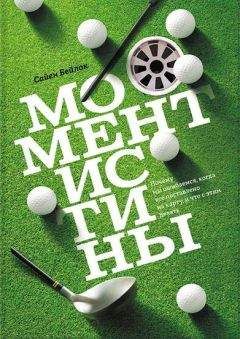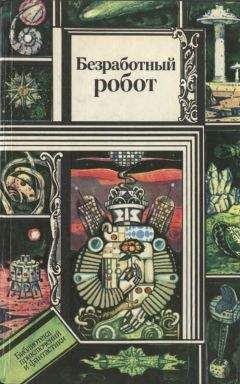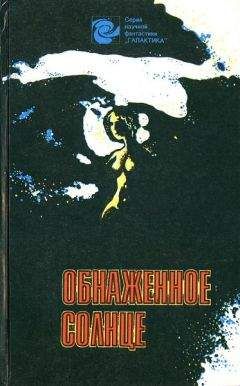10. Oudejans R. R. D. Reality based practice under pressure improves handgun shooting performance of police officers // Ergonomics, 2008. Vol. 51. Pp. 261–273.
11. Milton J., Solodkin A., Hlustik P., Small S. L. The mind of expert motor performance is cool and focused // Neuroimage, 2007. Vol. 35. Pp. 804–813.
Глава 2
12. Более подробно о МРТ и функциональной МРТ см.: Huettel S. A., Song A. W., McCarthy G. Functional Magnetic Resonance Imaging. Sunderland, MA: Sinauer Associates, 2004; Gazzaniga M. S., Ivry R. B., Mangun G. R. Cognitive Neuroscience: The Biology of the Mind. New York: Norton, 2002.
13. Saturday Matters with Sue Lawley, BBC Television, October 1980 // Masters R., Maxwell J. The theory of reinvestment // International Review of Sport and Exercise Psychology, 2009. Vol. 1. Pp. 160–183.
14. McCabe D. P., Castel A. D. Seeing is believing: The effect of brain images on judgments of scientific reasoning // Cognition, 2008. Vol. 107. Pp. 343–352.
15. Helsen W. F., Starkes J. L. A multidimensional approach to skilled perception and performance in sport // Applied Cognitive Psychology, 1999. Vol. 13. Pp. 1–27.
16. Helsen W. F., Van Winckel J., Williams A. M. The relative age effect in youth soccer across Europe // Journal of Sports Sciences, 2005. Vol. 23. Pp. 629–636.
17. Bisanz J., Morrison F., Dunn M. Effects of age and schooling on the acquisition of elementary quantitative skills // Developmental Psychology, 1995. Vol. 31. Pp. 221–236.
18. Cote J., MacDonald D. J., Baker J., Abernethy B. When ‘where’ is more important than ‘when’: Birthplace and birthdate effects on the achievement of sporting expertise // Journal of Sport Sciences, 2006. Vol. 24. Pp. 1065–1073. В Канаде населенные пункты с населением менее 1000 человек были исключены из исследования.
19. De Groot A. D. Thought and Choice in Chess. The Hague: Mouton, 1965.
20. Chase W. G., Simon H. A. Perception in chess // Cognitive Psychology, 1973. Vol. 4. Pp. 55–81.
21. Ericsson K. A., Polson P. G. An experimental analysis of the mechanisms of a memory skill // Journal of Experimental Psychology: Learning, Memory, & Cognition, 1988. Vol. 14. Pp. 305–316.
22. Maguire E. A. Navigation-related structural change in the hippocampi of taxi drivers // Proceedings of the National Academy of Sciences, 2000. Vol. 97. Pp. 4398–4403.
23. Draganski B. Changes in grey matter induced by training: Newly honed juggling skills show up as a transient feature on a brain-imaging scan // Nature, 2004. Vol. 427. Pp. 311–312.
24. Дополнительно см.: Münte T. F., Altenmüller E., Jäncke L. The musician’s brain as a model of neuroplasticity // Nature Reviews Neuroscience, 2002. Vol. 3. Pp. 473–478.
25. Дополнительно см.: Hernandez A. E., Li P. Age of acquisition: Its neural and computational mechanisms // Psychological Bulletin, 2007. Vol. 133. Pp. 638–650.
26. Это шкала Reinvestment Scale для спортсменов. Воспроизведено с разрешения. См.: Masters R. S. W., Eves F. F., Maxwell J. Development of a movement specific reinvestment scale // T. Morris et al., eds. Proceedings of the ISSP 11th World Congress of Sport Psychology, Sydney, Australia, 2005. Оригинальную шкалу, использованную для исследования спортсменов в сквоше и теннисе, см. в главе 7 и работе: Masters R. S. W., Polman R. C. J., Hammond N. V. ‘Reinvestment’: A dimension of personality implicated in skill breakdown under pressure // Journal of Personality and Individual Differences, 1993. Vol. 14. No. 5. Pp. 655–666.
27. Дополнительно см.: Masters R., Maxwell J. The theory of reinvestment // International Review of Sport and Exercise Psychology, 2008. Vol. 1. Pp. 160–183.
28. См.: Yarrow K., Brown P., Krakauer J. W. Inside the brain of an elite athlete: The neural processes that support high achievement in sports // Nature Reviews Neuroscience, 2009. Vol. 10. Pp. 585–596.
Глава 3
29. © American Psychological Association, 2009. Использовано с разрешения с сокращениями: Maddux W. W., Galinsky A. D. Cultural borders and mental barriers: The relationship between living abroad and creativity // Journal of Personality and Social Psychology, 2009. Vol. 96. Pp. 1047–1061. Использование информации Американской ассоциации психологов не подразумевает поддержку данной работы Ассоциацией.
30. Дополнительно см. Thompson-Schill S. L., Ramscar M., Chrysikou E. G. Cognition without control: When a little frontal lobe goes a long way // Current Directions in Psychological Science, 2009. Vol. 18. Pp. 259–263. См. также: German T. P., Defeyter M. A. Immunity to functional fixedness in young children // Psychonomic Bulletin & Review, 2000. Vol. 7. Pp. 707–712.
31. Beilock S. L., DeCaro M. S. From poor performance to success under stress: Working memory, strategy selection, and mathematical problem solving under pressure // Journal of Experimental Psychology: Learning, Memory, & Cognition, 2007. Vol. 33. Pp. 983–998.
32. Conway A. R. A., Cowan N., Bunting M. F. The cocktail party phenomenon revisited: The importance of working memory capacity // Psychonomic Bulletin and Review, 2001. Vol. 8. Pp. 331–335.
33. Kersten A. W., Earles J. L. Less really is more for adults learning a miniature artificial language // Journal of Memory and Language, 2001. Vol. 44. Pp. 250–273. Дополнительно см.: Newport E. L. Maturational constraints on language learning // Cognitive Science, 1990. Vol. 14. Pp. 11–28.
34. Reverberi C., Toraldo A., D’Agostini S., Skrap M. Better without (lateral) frontal cortex? Insight problems solved by frontal patients // Brain, 2005. Vol. 128. Pp. 2882–2890.
35. Cochran B. P., McDonald J. L., Parault S. J. Too smart for their own good: The disadvantage of a superior processing capacity for adult language learners // Journal of Memory and Language, 1999. Vol. 41. Pp. 30–58.
36. Beilock S. L., Carr T. H., MacMahon C., Starkes J. L. When paying attention becomes counterproductive: Impact of divided versus skill-focused attention on novice and experienced performance of sensorimotor skills // Journal of Experimental Psychology: Applied, 2002. Vol. 8. Pp. 6–16.
37. Ellenbogen J. M., Hu P. T., Payne J. D. et al. Human relational memory requires time and sleep // Proceedings of the National Academy of Sciences, USA, 2007. Vol. 104. Pp. 7723–7728.
38. Friedman N. P. et al. Individual differences in executive functions are almost entirely genetic in origin // Journal of Experimental Psychology: General, 2008. Vol. 137. Pp. 201–225.
39. Ward J. The Student’s Guide to Cognitive Neuroscience, 2nd ed. London: Psychology Press, 2010.
40. Klingberg T., Forssberg H., Westerberg H. Training of working memory in children with ADHD // Journal of Clinical and Experimental Neuropsychology, 2002. Vol. 24. Pp. 781–791. См. также: Klingberg T. et al. Computerized training of working memory in children with ADHD — a randomized, controlled trial // Journal of the American Academy of Child Adolescent Psychiatry, 2005. Vol. 44. Pp. 177–186. Общий обзор см.: Клинберг Т. Перегруженный мозг. Информационный поток и пределы рабочей памяти. М. : Ломоносовъ, 2010.
41. Posner M. I., Rothbart M. K. Influencing brain networks: implications for education // Trends in Cognitive Sciences, 2005. Vol. 9. Pp. 99–103. Дополнительно см.: Rothbart M. K., Posner M. I. Educating the Human Brain. Washington, D.C.: American Psychological Association, 2006.
42. Olesen P. J., Westerberg H., Klingberg T. Increased prefrontal and parietal activity after training of working memory // Nature Neuroscience, 2003. Vol. 7. Pp. 75–79.
43. Green C. S., Bavelier D. Action video games modifies visual selective attention // Nature, 2003. Vol. 423. Pp. 534–537.
44. Gopher D., Weil M., Bareket T. Transfer of skill from a computer game trainer to flight // Human Factors, 1994Vol. 36. Pp. 1–19. См. также: Sharp Brains, интервью с Дэниелом Гофером, 2 ноября 2006 г. // http://www.sharpbrains.com/blog/2006/11/02/cognitive-simulations-for-basketball-game-intelligence-interview-with-prof-daniel-gopher/.
45. White H. A., Shah P. Uninhibited imaginations: Creativity in adults with Attention-Deficit/Hyperactivity Disorder // Personality and Individual Differences, 2006. Vol. 40. Pp. 1121–1131.
Глава 4
46. Summers L. H. Remarks at NBER Conference on Diversifying the Science & Engineering Workforce, Cambridge, Mass., January, 14, 2005.
47. Benbow C. P., Stanley J. C. Sex differences in mathematical reasoning ability: More facts // Science, 1983. Vol. 222. Pp. 1029–1030.
48. Ackerman P. L. Cognitive sex differences and mathematics and science achievement // American Psychologist, 2006. Vol. 61. Pp. 722–723.
49. Дополнительно см.: Shields S. A. Functionalism, Darwinism, and the psychology of women: A study in social myth // American Psychologist, 1975. Pp. 739–754.
50. Summers’ remarks on women draw fire // Boston Globe, 2005. January 17.
51. Herrnstain R., Murray C. The Bell Curve: Intelligence and Class Structure in American Life. New York: Free Press, 1994.
52. Benbow C. P., Stanley J. C. Sex differences in mathematical reasoning ability: More facts // Science, 1983. Vol. 222. Pp. 1029–1030. См. также: Benbow C. P., Stanley J. C. Sex differences in mathematical ability: Fact or artifact? // Science, 1980. Vol. 210. Pp. 1262–1264.
53. Ellison G., Swanson A. The gender gap in secondary school mathematics at high achievement levels: Evidence from the American Mathematics Competitions, NBER Working Paper No. 15238, August 2009.
54. Rivera S. M., Reiss A. L., Eckert M. A., Menon V. Developmental changes in mental arithmetic: Evidence for increased specialization in the left inferior parietal cortex // Cerebral Cortex, 2005. Vol. 15. Pp. 1779–1790.
55. Дополнительно см.: Halpern D. F. et al. The science of sex differences in science and mathematics // Psychological Science in the Public Interest, 2007. Vol. 8. Pp. 1–51.
56. Resnick S. M., Berenbaum S. A., Gottesman I. I., Bouchard T. J. Early hormonal influences on cognitive functioning in congenital adrenal hyperplasia // Developmental Psychology, 1986. Vol. 22. Pp. 191–198. См. также: Maloufa M. A. et al. Cognitive outcome in adult women affected by congenital adrenal hyperplasia due to 21-hydroxylase deficiency // Hormone Research in Pediatrics, 2006. Vol. 65. Pp. 142–150.
57. Monastersky R. Studies show biological differences in how boys and girls learn about math, but social factors play a big role too // Chronicle of Higher Education, 2005. March 4. Vol. 51.
58. Дополнительно см.: Spelke E. S. Sex differences in intrinsic aptitude for mathematics and science? A critical review // American Psychologist, 2005. Vol. 60. Pp. 950–958.
59. Gallagher A., DeLisi R. Gender differences in Scholastic Aptitude Test — Mathematics problem solving among high-ability students // Journal of Educational Psychology, 1994. Vol. 86. Pp. 204–211.
60. Fennema E., Carpenter T., Jacobs V. et al. A longitudinal study of gender differences in young children’s mathematical thinking // Educational Researcher, 1996. Vol. 27. Pp. 33–43.
61. Butler L. Gender differences in children’s arithmetical problem solving procedures. Unpublished M.A. thesis, University of California at Los Angeles, 1999 // Association for Women in Mathematics president Cathy Kessel’s talk at the MER-AWM Session at the 2005 Joint Mathematics Meetings.
62. Atkinson R. C. Let’s step back from the SAT I // San Jose Mercury News, 2001. February 23 // http://www.ucop.edu/pres/comments/satmerc.html.
63. Spencer S. J., Steele C. M., Quinn D. M. Stereotype threat and women’s math performance // Journal of Experimental Social Psychology, 1999. Vol. 35. Pp. 4–28.
64. Дополнительно см.: Steele C. M. A threat in the air: How stereotypes shape intellectual identity and performance // American Psychologist, 1997. Vol. 52. Pp. 613–629; Schmader T., Johns M., Forbes C. An integrated process model of stereotype threat effects on performance // Psychological Review, 2008. Vol. 115. Pp. 336–356.
65. Krendl A. C., Richeson J. A., Kelley W. M., Heatherton T. F. The negative consequences of threat: A functional magnetic resonance imaging investigation of the neural mechanisms underlying women’s underperformance in math // Psychological Science, 2008. Vol. 19. Pp. 168–175. См. также: Beilock S. L. Math performance in stressful situations // Current Directions in Psychological Science, 2008. Vol. 17. Pp. 339–343.
66. Levine S. C. et al. Socioeconomic status modifies the sex difference in spatial skill // Psychological Science, 2005. Vol. 16. Pp. 841–845.
67. Thurstone T. G. PMA readiness level. Chicago: Science Research Associates, 1974. Приведено с разрешения.
68. В 2001 г. 90% всех комплектов Lego, проданных в США, предназначались для мальчиков. См.: Mattel sees untapped market for blocks: Little girls // Wall Street Journal, 2002. June 6. Более того, как сообщала Wall Street Journal 24 декабря 2009 г., Lego практически отсутствуют на рынке игрушек для девочек: http://online.wsj.com/article/SB10001424052748704254604574613791179449708.html.
69. Hassett J. M., Siebert E. R., Wallen K. Sex differences in rhesus monkey toy preferences parallel those of children // Hormones & Behavior, 2008. Vol. 54. Pp. 359–364.





